It was well after dark when we arrived over the unfamiliar rural airport. We were descending toward that green and white airport beacon, and I thought I could see the headlights of my brother-in-law’s crew-cab pickup truck in the parking lot. “Watch this,” I said to my daughter, and I clicked the push-to-talk switch seven times on the CTAF. Nothing happened. I made a little heading change. Sometimes this gives the antenna a better view. I clicked again. Still nothing.
I tried again, and this time the runway lights came on, but only on one side. Which side of the runway was it? Did I want to risk lining up on the wrong side of the lights? Over the extended centerline the trees were trimmed, the wires were buried and the berms were bulldozed, but what had been done just a little bit to one side?
We circled the airport at pattern altitude. Then I noticed a line of cars speeding from town toward the airport. Help was on the way! People, probably at a local bar, had noticed our predicament and they were all rushing out. Soon, someone called me on the radio and said that the lights were broken—there was no NOTAM—and we had to divert.
An unplanned VFR night flight over unfamiliar terrain can be a bit scary. Now that we have incredible navigation systems, it is less scary, but the basic principles still apply. Find a place to go, that is, if you weren’t smart enough to already have one in mind. Pick a safe altitude. Be thankful that you planned to have enough fuel. And you need lights. There are plenty of stories of airplanes making unsuccessful approaches to unlit areas, and the lights from your brother-in-law’s pickup are not enough.
A look at the sectional chart showed an airport less than 20 NM away, and the big blue numbers suggested that 3200 feet MSL was a safe altitude (but beware: see the sidebar below). So we climbed to 3500 and headed in roughly the right direction. (Except in unusual wind conditions or low visibility, a good guess at a heading will be close enough to get you started in the right direction. You can fine-tune it as workload permits.) I could see the airport beacon almost as soon as we leveled off. The runway lights worked there, and the landing was uneventful.
This was supposed to be an easy family vacation flight, yet we ran into almost all of the hazards of night flying in a few short minutes.
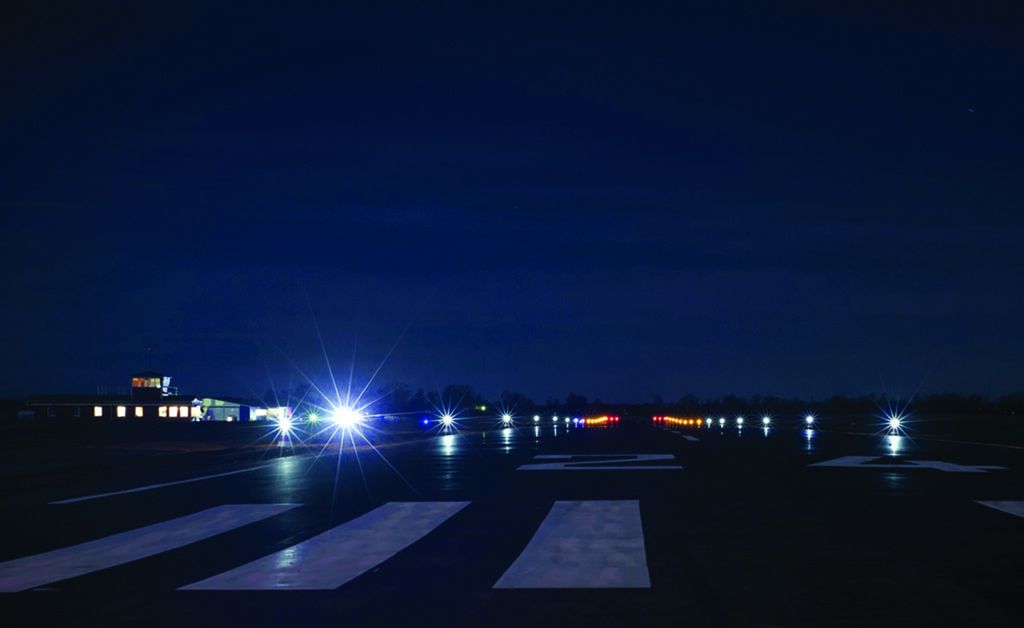
Alternatives
One advantage we had that night was a handful of usable alternatives. A glance at the chart for the area shows lots of nearby airports, so many that you might not consciously choose one. But consider a night flight in a single-engine airplane over remote mountainous territory. There may not be any suitable alternate airports along the route, the terrain is high and there are few obstruction lights.
Flying airways isn’t much better. The minimum en route altitude may require supplemental oxygen. (Pilots typically should use supplemental oxygen when above 5000 feet at night anyway. — Ed.) There may be mountains between the airway and the alternate airports.
Traffic Patterns
There are at least two things to keep in mind about night operations at unfamiliar airports. First, if the Chart Supplement says something like, “Not recommended for ngt use or in marginal wx by unfamiliar pilots due to mountainous terrain,” like it says about the Friedman Memorial Airport (KSUN) in Hailey, Idaho, pay attention. Strange airports can have invisible obstructions; it’s safer to assume that they are there. Keep your pattern close to the airport. If the runway is equipped with a VASI or PAPI, remember they are only usable within four miles of the threshold.
Second, if the approach plates for your intended airport say, “Procedure NA at night,” like at the Blairstown (N.J.) Airport (1N7), it’s probably a good idea to not go there at night.
If you are instrument-rated, then you’re familiar with the circling approach. In my experience, very few pilots understand the dangers involved or have developed good techniques. At airports where circling is allowed, the charted altitudes mean that the area has been surveyed for obstructions, the size of the area keyed to aircraft stall speed and then multiplied: 1.3 VS0. It also depends on the airport’s elevation and resulting circling altitude, because true airspeeds are greater at higher altitudes. If you stay above circling minimums within the defined area, you can be confident you won’t hit any obstructions. A VFR-only pilot can find this information easily because instrument approach charts are freely available on many electronic flight bags (EFBs) and flight planning sites.
There’s a gotcha, of course: Sometimes you need or want to fly faster than 1.3 VS0. For example, the King Airs I fly have a “formula speed” of 121 KIAS, but the minimum airspeed in icing conditions is 140 KIAS, so I use the minimums for that speed and accept the higher altitudes, if any. Meanwhile, some airports have restrictions on circling. For example, approach plates for the Jackson Hole Airport (KJAC) in Jackson, Wyo., Jackson Hole, carry the notation, “Circling NA E of Rwy 1-19.” There’s an obstruction there, so don’t fly over it at night, even if VFR.
Because it’s hard to judge distance at night, your traffic pattern might be closer to or, more likely and more concerning, further from the runway. You definitely do not want to fly three miles past the airport at pattern altitude and maneuver to enter downwind on the 45, unless you are over an area with a lot of lights and few things to hit.
If you are approaching more-or-less straight in, you can fly along the runway at pattern altitude and then turn to fly crosswind. You might time this leg—20 or 30 seconds will be about right in most light planes—or you can use GPS distance to make sure you turn downwind at the proper point.
The situation is trickier if you are approaching from downwind, because regulations state that all turns in the traffic pattern must be made to the left, period, unless charted otherwise. The smartest move would be to overfly about half of the runway, and then turn 45 degrees and fly for 30 seconds or so to intercept the downwind leg, but this is not legal because you must turn right to intercept left downwind. Nonetheless, the FAA’s Instrument Flying Handbook (FAA-H-8083-15B) shows circling patterns with turns in both directions.
Departures
Night departures are sometimes instrument departures, even in VFR conditions. Where are the obstructions? In the IFR world, we have standard instrument departures (SIDs) and obstacle departure procedures (ODPs) that are guaranteed to keep us from hitting anything, as long as we can meet certain performance requirements. Airlines (Part 121) and charter operators (Part 135) are required to use them except when directed otherwise by ATC. As with approach procedures, charts for SIDs and ODPs are widely available.
If the airport isn’t an IFR airport, there won’t be an ODP or SID. The Chart Supplement generally has obstacle information in the remarks. For example, at the Hoven (S.D.) Municipal Airport (9F8), there’s, “Church steeple 2029’ MSL 6800’ from Ry 31 thld.” This obstruction does not appear on sectional charts. The steeple is a little more than a mile from the departure end of Runway 13, and is about 140 feet AGL, so you should be able to out-climb it even if you can’t see it.
Instrument Conditions
A night flight is almost an instrument flight, even in good VFR. During night training, I take my students to “The Abyss,” a desert area with no lights on the ground. The only way to keep the airplane right-side-up there is by instruments. The same thing happens over water. If you use Runway 24 at the Chatham (Mass.) Municipal Airport (KCQX) for takeoff, you are almost immediately on instruments.
That makes an instrument cockpit check mandatory for night flights, even for VFR pilots. If your attitude instruments are vacuum-driven, check the suction gauge, and make sure the gyro instruments are working by watching what they do while you taxi. The heading indicator and turn coordinator (or whatever you have) should move the right way, and the attitude indicator should show wings-level except on a slope.
You also must be able to do a 180-degree course reversal by reference to the flight instruments. Many VFR pilots have had no “hood time” for years, and cannot do a 180-degree turn, so when someone comes to me for a flight review, I make sure they review it.
If you don’t know an airport well, think about a short-field landing, even if the runway is long. Good short-field technique typically results in a steeper approach. Be careful when maneuvering in the pattern at night. It’s hard to maneuver without a visible horizon, even for instrument-rated pilots, and your attitude indicator is better than a few lights on the ground during your turns.
The Good Part
Night increases the hazards and requires more preparation than day. Preparation is the key, and it can be hard to make yourself prepare more when you are tired and are only going to get more so as the night goes on.
But the air is generally smooth. There is less traffic. You can often go through Restricted Areas and MOAs, their users being home in bed (although there might not be many alternatives in these areas). When you turn down the cockpit lights you can see the Milky Way (I once saw it directly over New York City, while above an undercast), comets or satellites high above. Night flying is fun.
As long as you are prepared.
‘When Going From High To Low, Look Out Below’

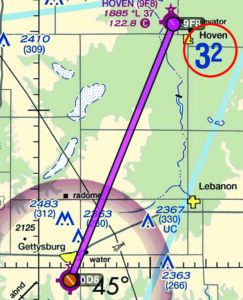
When operating under VFR at night, pilots should know the maximum elevation figure (MEF) published on sectional charts and what it represents. The MEF is determined by first obtaining the highest terrain feature or obstacle elevation in the chart sector. An error factor of either 100 or 200 feet is added to that value, and then another 200 feet is added to insure against uncharted features/obstacles. This number is then rounded up to the nearest 100-foot level. An example of the MEF is circled in red on the sectional chart excerpt at right.
The table above, adapted from the Aeronautical Information Manual (AIM), shows how far below you need to look when the temperature is below standard. At night in the winter in mountainous terrain, the MEF may not keep you safe.
The AIM: “To use the table, find the reported temperature in the left column, and read across the top row to locate your height above the airport (subtract the airport elevation from the flight altitude). Find the intersection of the temperature row and height above airport column. This number represents how far the aircraft may be below the indicated altitude due to possible cold temperature induced error.”
Can You Believe Your Own Eyes?
Human eyes don’t work the same way at night, and it’s important for pilots to know the differences. The Pilot’s Handbook of Aeronautical Knowledge (FAA H-8083-25B) has a comprehensive discussion, including the danger of and prevention of spatial disorientation. And you can also learn about some of the problems on your own. Here are a few you may have forgotten:
Empty-Field Myopia
Induced nearsightedness that is associated with flying at night, in instrument meteorological conditions and/ or reduced visibility. With nothing to focus on, the eyes automatically focus on a point just slightly ahead of the airplane.
Night Blind Spot
Everyone has blind spots, but we have more at night. You can’t see straight ahead at night, which is why it’s so important to move your eyes frequently. You can experience this on a clear night by staring directly at a fairly bright star. You can actually make it disappear! Look just a couple of degrees to the side to make it reappear. Looking slightly to one side of what you’re trying to see is far more effective. (This is also useful in preventing tripping over your dog in the middle of the night; he’s easier to see if you don’t look right at him.)

Dark Accommodation
We all know that it takes time for eyes to adjust to the dark. To see how well you adjust, keep one eye closed for a few minutes in a lit room, then go into a darker room. The light-soaked eye can’t see much, but open the eye that was closed and you’ll see a lot more detail. At night, I keep one eye closed while walking to the plane.
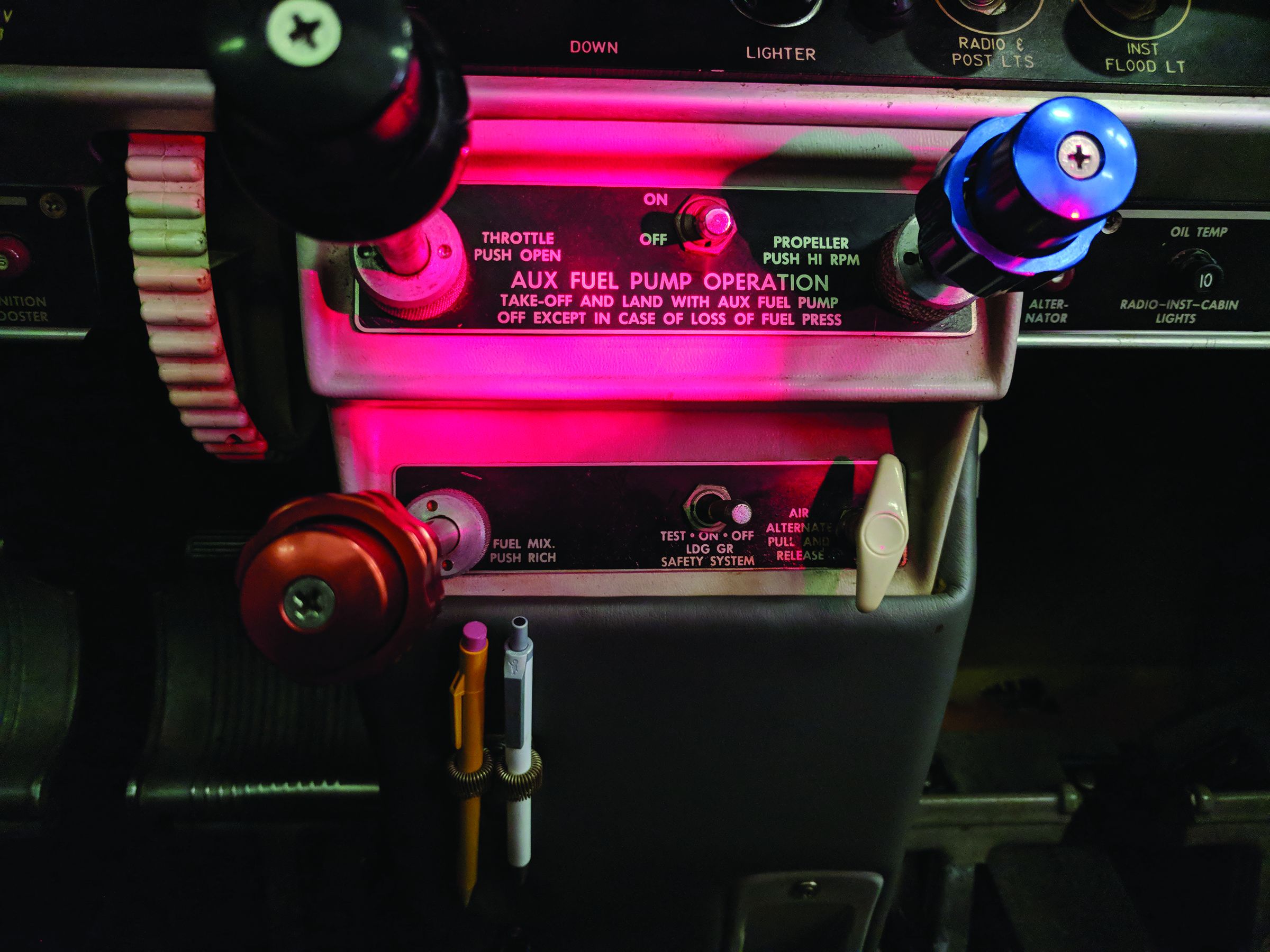
Jim Wolper is an airline transport pilot and mathematics professor. He’s also a CFI with single-engine, multi-engine, instrument and glider ratings.
This article originally appeared in the September 2021 issue of Aviation Safety magazine.
For more great content like this, subscribe to Aviation Safety!



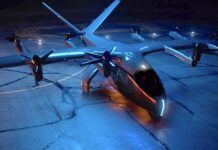
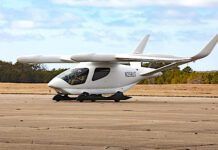
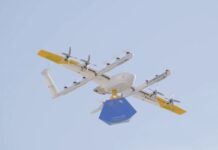
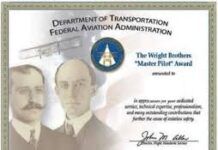



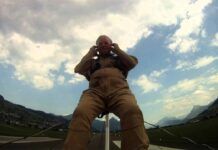


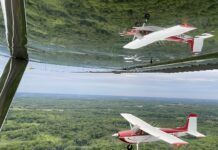
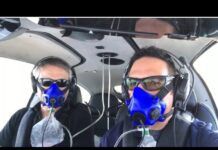
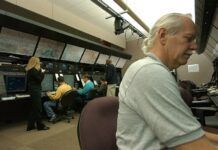
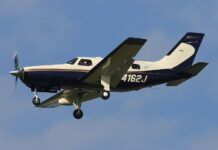
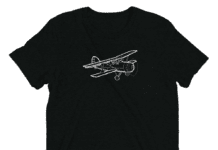
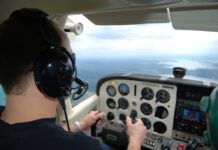
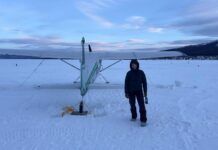

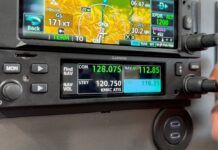
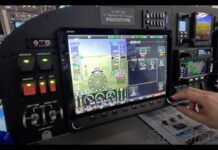
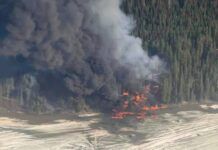
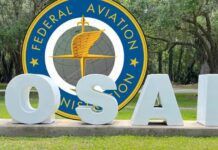

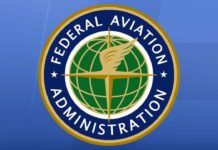
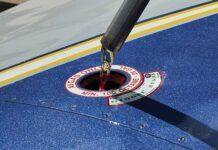


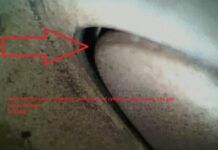




” (Pilots typically should use supplemental oxygen when above 5000 feet at night anyway. — Ed.)” – JHC, my home is already 1800 feet into the Danger Zone. Good thing I never wander around the house at night. I could get hurt. Is this about to become Policy generated by FAA Aerospace Medical flatlanders?
While I’m at a relatively modest 2400 feet, I can’t avoid running into nearby stuff without going to at least 7000 feet or so.
I suppose the 5000 foot suggestion merely illustrates that the bulk of our population – including those who govern us – lives more or less at sea level.
I just find it much easier to file and fly IFR at night, including flying an instrument approach even in visual conditions. If you want to fly consistently at night it’s another reason to go get your instrument rating.
Lights on one side of the runway.
Making a low pass over them will tell you which side is lit.
There is ALWAYS enough ambient light for this.
I’m really surprised only one commenter suggested this option. Maybe I have better night vision than most people, or maybe regular flights into an airport with only boundary lights gave me a lower pucker factor.
Questioning a pilot’s judgement that the risk was uncomfortably high, especially with passenger(s) aboard, is counterproductive. You weren’t there, and your risk assessment will differ due to experience, physical advantages or who knows what, so questioning taking the sure thing over the new and unusual is imprudent.
I did so much of my initial lessons at night, I was very comfortable with night flight. Years of aging and little night flying changed this. Better lights are an upgrade available on many planes, and can really help with some of the issues. An IFR rating is also a boost even if you cannot afford to remain current.
Jim Wolper’s article is well done. Kudos.
Some guy named ‘Ed’ said “Pilots typically should use supplemental oxygen when above 5000 feet at night anyway. — Ed.”
FWIW, I know Only a VERY FEW pilot/owners of SE piston aircraft who fly with O2. A super majority of those pilot/owners have newer aircraft with onboard O2 systems. Yes, it’s a great idea to fly at night with O2. Is an O2 bottle in the cockpit widely practiced? I have noeither seen nor heard of many O2 bottles in the cockpit during my 4 decades of experience flying piston singles over the Western states for personal, volunteer (CAP), and work.
While Wolper covered most of the risks of night flying he didn’t mention one large winged elephant in his article. That is the less than perfect record of aircraft engines, particularly piston engines. Many of us have heard that pithy saying “Two is ONE, and ONE is NONE”. Single engine flying in IMC or at night exposes pilots passengers to substantially higher risk because if the engine “malfunctions” we may have few or no survivable options in the subsequent night/IMC landing. The NTSB aviation accident db consistently, year after year, shows “system malfunction” power plant in the top 2 or 3 root causes of GA accidents. A review of the accident reports shows most accident aircraft were powered by a single piston engine. The US Department of the Interior and US Department of Agriculture have for years required SE piston aircraft to avoid either night or IMC flights largely for this reason.